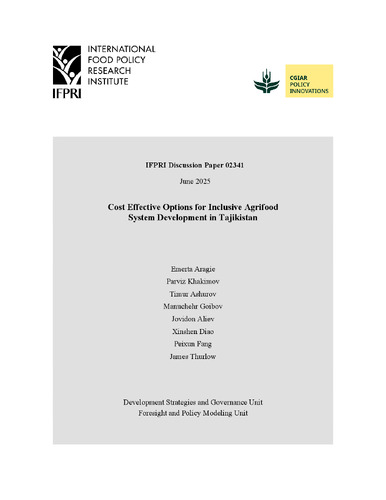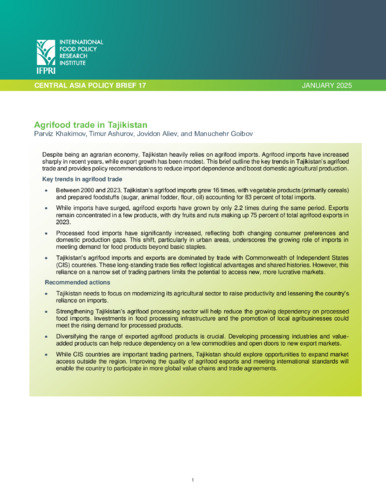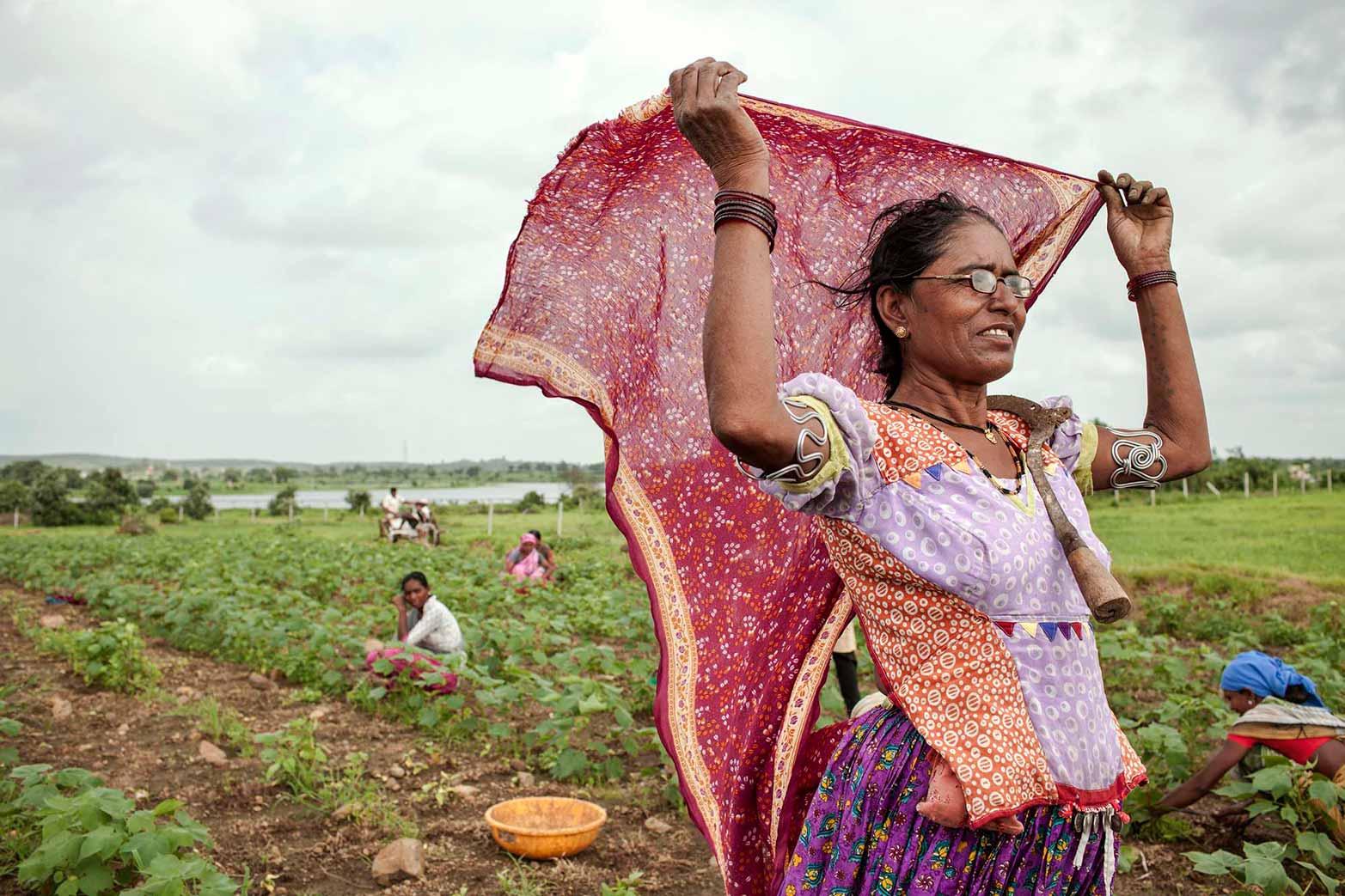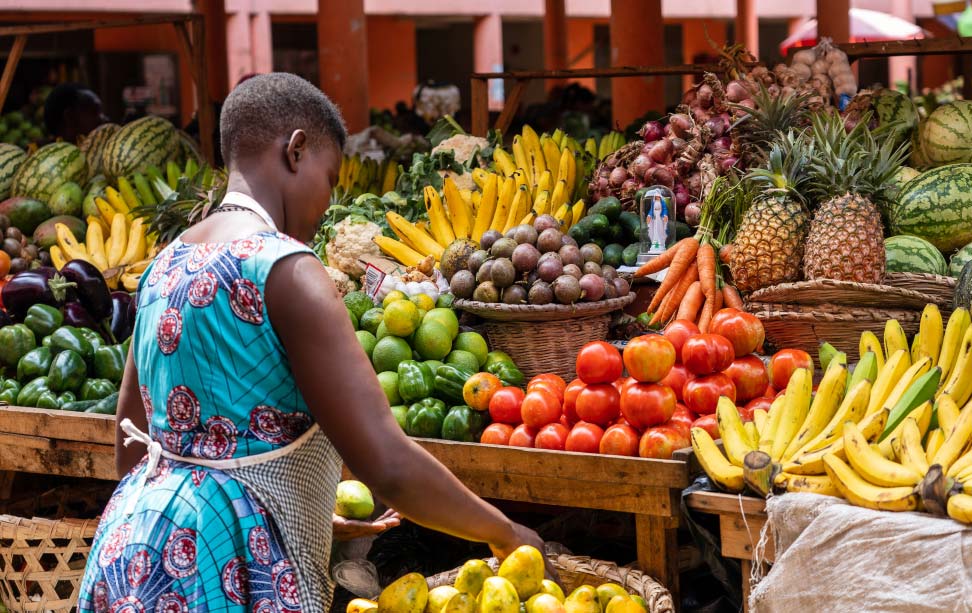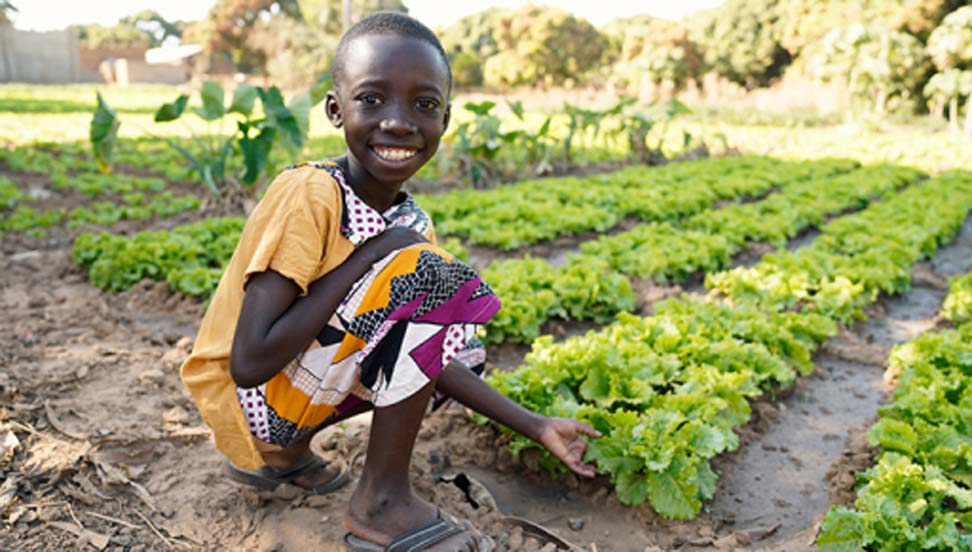Cost effective options for inclusive agrifood system development in Tajikistan
This paper presents a model-based and data-driven analysis of alternative public investment options for Tajikistan’s agrifood system based on cost-effectiveness in achieving multiple development outcomes. The study indicates that there is no single intervention that is the most cost-effective across all economic and social outcomes, including agrifood GDP growth, job creation, poverty reduction, lowered undernourishment, and improvement in diet quality. Irrigation infrastructure development, R&D in husbandry, and food loss and waste reduction are the most cost-effective investments in the combined economic outcomes, including growth and jobs. In contrast, irrigation, food loss and waste reduction, and seed systems are more effective in the combined social outcomes, including poverty, undernourishment, and diet. Considering time horizons, extension services are more effective in the short run, while irrigation and R&D deliver greater impact over time. Sector variations in the magnitude of effects are also observed among investment interventions. Overall, comparisons across development outcomes, sectoral focus, and timeframes reveal important synergies and trade-offs, underscoring the need for evidence-based tools to guide effective policy and investment decisions.
Authors
Aragie, Emerta A.; Khakimov, Parviz; Ashurov, Timur; Goibov, Manuchehr; Aliev, Jovidon; Diao, Xinshen; Fang, Peixun; Thurlow, James
Citation
Aragie, Emerta; Khakimov, Parviz; Ashurov, Timur; Goibov, Manuchehr; Aliev, Jovidon; Diao, Xinshen; Fang, Peixun; and Thurlow, James. 2025. Cost effective options for inclusive agrifood system development in Tajikistan. IFPRI Discussion Paper 2341. Washington, DC: International Food Policy Research Institute. https://hdl.handle.net/10568/175060
Country/Region
Tajikistan
Keywords
Asia; Central Asia; Public Investment; Agrifood Systems; Development; Economic Impact
Access/Licence
Open Access
